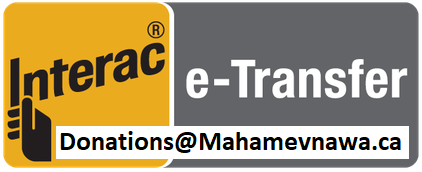Devotional Services: One way we express our faith

Devotional services, also known as pujas or vandanas, are one of the ways that people express their faith in the enlightenment of the Buddha.
New to all this? Don't worry! You can just observe or follow along as you like. We are always happy to answer any questions. The actual text of our service can be downloaded here along with some audio recordings.
A devotional service has several main parts:
Making Offerings
One way we show our gratitude to our teacher the Buddha is by making offerings. Of course the Buddha is no longer alive and does not actually receive these gifts. By remembering his special qualities as we make the offerings we develop a stronger sense of who he is and what he was able to do. As our faith in the enlightenment of the Buddha grows, these actions become more meaningful.
In Vimanavatthu 4.9, we learn, “If people offer something to the Supreme Buddha when he is alive or after he has passed away, as long as they have the same confident mind on both occasions, the results will be the same. Beings are reborn in heaven because of their confident minds.”
Traditional offerings, or puja items, include flowers, fragrance or incense, candles, water, and sweet drinks. On special occasions people sometimes offer honey and different kinds of medicine. It is also common to offer food items in the morning when a meal is given to the monks.
The Language of the Buddha
The special language we use in our devotional service is called Pali. It is the ancient language that the Buddha’s teachings are written in. By continuing to use this language along with a translation we are able to keep a direct connection with the Buddha while at the same time understanding the meaning. It also ensures that as modern languages change we can always go back to the original.
The best way to learn Pali pronunciation is by listening and chanting along. In brief, it’s helpful to know that in “th” the “h” is always silent, and that “c” and “ch” are both pronounced with a hard “ch.”
Sadhu!
One word we say throughout the service is “Sādhu!” It means “excellent.” You will also hear “Namo Buddhaya,” which means “Homage to the Buddha.”
Reciting the Qualities of the Buddha
As we place the puja items on the shrine, we recite the qualities of the Buddha. Through this recollection we make the offering more beneficial for ourselves.
1. Iti pi so bhagavā, araham: Such Indeed is the Blessed One, Arahant, worthy one,
2. sammāsambuddho: supremely enlightened,
3. vijjācaranasampanno: endowed with knowledge and virtue,
4. sugato: follower of the Noble Path,
5. lokavidū: knower of worlds,
6. anuttaro purisadammasārathi: the peerless trainer of persons,
7. satthā devamanussānam: teacher of gods and humans,
8. buddho: the Enlightened Teacher,
9. bhagavā ti: the Blessed One
Bowing
In the time of the Buddha as well as today, people bow, as we do, to show our respect and humility. We bow to show respect to the Buddha and his monastic followers. Even children are encouraged to bow to their own parents to show respect. As with all of the practices we do here, you are welcome to participate or observe in a way that feels comfortable to you.
If you have any questions, please speak to one of the monks or lay people. Everyone wants to help you feel at home here.
New to all this? Don't worry! You can just observe or follow along as you like. We are always happy to answer any questions. The actual text of our service can be downloaded here along with some audio recordings.
A devotional service has several main parts:
- Placing things on the shrine
- Going for refuge and taking the precepts
- Reciting the qualities of the Triple Gem
- Reciting the Buddha's qualities and dedicating the offering.
- Chanting a passage of scripture
- A Short guided meditation
Making Offerings
One way we show our gratitude to our teacher the Buddha is by making offerings. Of course the Buddha is no longer alive and does not actually receive these gifts. By remembering his special qualities as we make the offerings we develop a stronger sense of who he is and what he was able to do. As our faith in the enlightenment of the Buddha grows, these actions become more meaningful.
In Vimanavatthu 4.9, we learn, “If people offer something to the Supreme Buddha when he is alive or after he has passed away, as long as they have the same confident mind on both occasions, the results will be the same. Beings are reborn in heaven because of their confident minds.”
Traditional offerings, or puja items, include flowers, fragrance or incense, candles, water, and sweet drinks. On special occasions people sometimes offer honey and different kinds of medicine. It is also common to offer food items in the morning when a meal is given to the monks.
The Language of the Buddha
The special language we use in our devotional service is called Pali. It is the ancient language that the Buddha’s teachings are written in. By continuing to use this language along with a translation we are able to keep a direct connection with the Buddha while at the same time understanding the meaning. It also ensures that as modern languages change we can always go back to the original.
The best way to learn Pali pronunciation is by listening and chanting along. In brief, it’s helpful to know that in “th” the “h” is always silent, and that “c” and “ch” are both pronounced with a hard “ch.”
Sadhu!
One word we say throughout the service is “Sādhu!” It means “excellent.” You will also hear “Namo Buddhaya,” which means “Homage to the Buddha.”
Reciting the Qualities of the Buddha
As we place the puja items on the shrine, we recite the qualities of the Buddha. Through this recollection we make the offering more beneficial for ourselves.
1. Iti pi so bhagavā, araham: Such Indeed is the Blessed One, Arahant, worthy one,
2. sammāsambuddho: supremely enlightened,
3. vijjācaranasampanno: endowed with knowledge and virtue,
4. sugato: follower of the Noble Path,
5. lokavidū: knower of worlds,
6. anuttaro purisadammasārathi: the peerless trainer of persons,
7. satthā devamanussānam: teacher of gods and humans,
8. buddho: the Enlightened Teacher,
9. bhagavā ti: the Blessed One
Bowing
In the time of the Buddha as well as today, people bow, as we do, to show our respect and humility. We bow to show respect to the Buddha and his monastic followers. Even children are encouraged to bow to their own parents to show respect. As with all of the practices we do here, you are welcome to participate or observe in a way that feels comfortable to you.
If you have any questions, please speak to one of the monks or lay people. Everyone wants to help you feel at home here.




